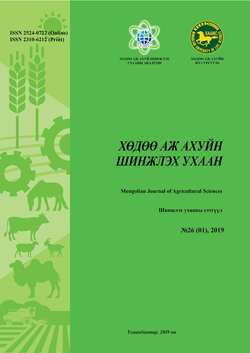Process optimization for amylase production of Bacillus subtilis M4 mutant strain
DOI:
https://doi.org/10.5564/mjas.v27i02.1279Keywords:
Amylase activity, Bacillus spp, Statistical optimization, OFAT, RSMAbstract
There are many factors that influence the character of bacterial metabolism and enzyme production.For the
maximum production of the desired products, the media components and fermentation conditions should be
optimized. In our investigation, we improved the amylase production of Bacillus subtilis M4 mutant strain by
the combination of two optimization techniques. The cultural conditions (time period, temperature, pH,
inoculum volume) and medium ingredients (various carbon, organic and inorganic nitrogen sources, chlorides, sulfates, phosphates, carbonates) were optimized by one factor at a time methodology (OFAT) and response surface methodology (RSM) to increase the amylase production. The optimum conditions for amylase production were found be the following: 35ºC, pH range 7 and incubation time 72h, inoculum volume 8% (v/v). Optimum medium composition for amylase production was the following: starch 12.9 g, peptone 9.75
g, calcium carbonate 0.439 g, magnesium sulfate 0.464 g and potassium chloride 0.464 g per liter. When
applied to our optimized medium in the fermentation process, the enzyme activity increased from 0.741 to
1.58 U/ml, which means a 2.1-fold increase compared to the original medium.
Downloads
475
Downloads
Published
How to Cite
Issue
Section
License
Copyright on any research article in the Mongolian Journal of Agricultural Sciences is retained by the author(s).
The authors grant the Mongolian Journal of Agricultural Sciences a license to publish the article and identify itself as the original publisher.

Articles in the Mongolian Journal of Agricultural Sciences are Open Access articles published under a Creative Commons Attribution 4.0 International License CC BY.
This license permits use, distribution and reproduction in any medium, provided the original work is properly cited.




